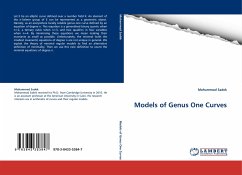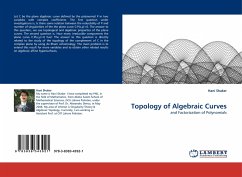
Models of Genus One Curves
Versandkostenfrei!
Versandfertig in 6-10 Tagen
39,99 €
inkl. MwSt.

PAYBACK Punkte
20 °P sammeln!
Let E be an elliptic curve defined over a number field K. An element of the n-Selmer group of E can be represented as a geometric object. Namely, as an everywhere locally soluble genus one curve defined by an equation of degree n. This equation is a generalised binary quartic when n=2, a ternary cubic when n=3, and two quadrics in four variables when n=4. By minimising these equations we mean making their invariants as small as possible. Unfortunately, the minimal (with the smallest invariants) equations of degree n are not unique in general. We exploit the theory of minimal regular models to ...
Let E be an elliptic curve defined over a number field K. An element of the n-Selmer group of E can be represented as a geometric object. Namely, as an everywhere locally soluble genus one curve defined by an equation of degree n. This equation is a generalised binary quartic when n=2, a ternary cubic when n=3, and two quadrics in four variables when n=4. By minimising these equations we mean making their invariants as small as possible. Unfortunately, the minimal (with the smallest invariants) equations of degree n are not unique in general. We exploit the theory of minimal regular models to find an alternative definition of minimality. Then we use this new definition to count the minimal equations of degree n.












